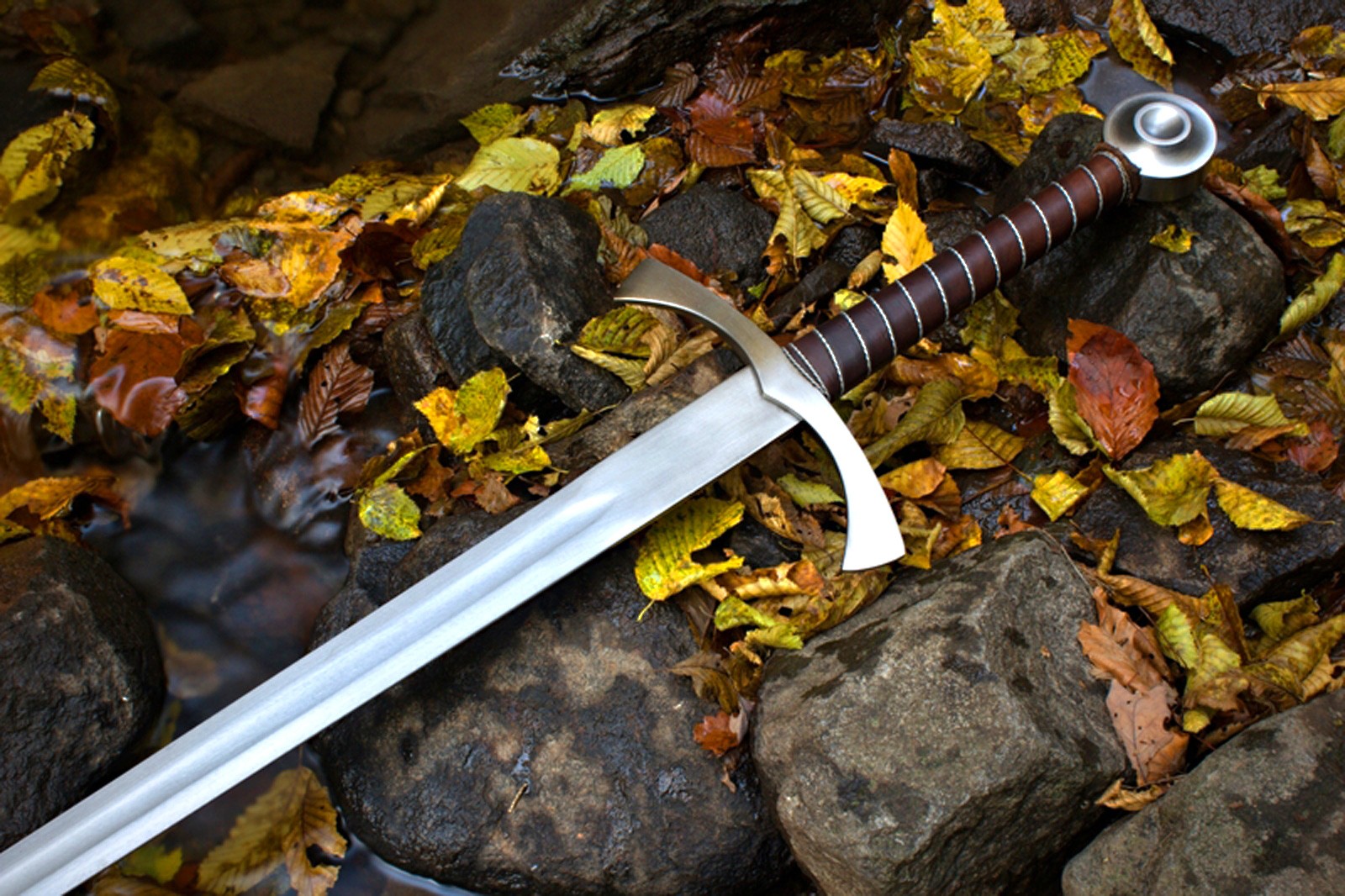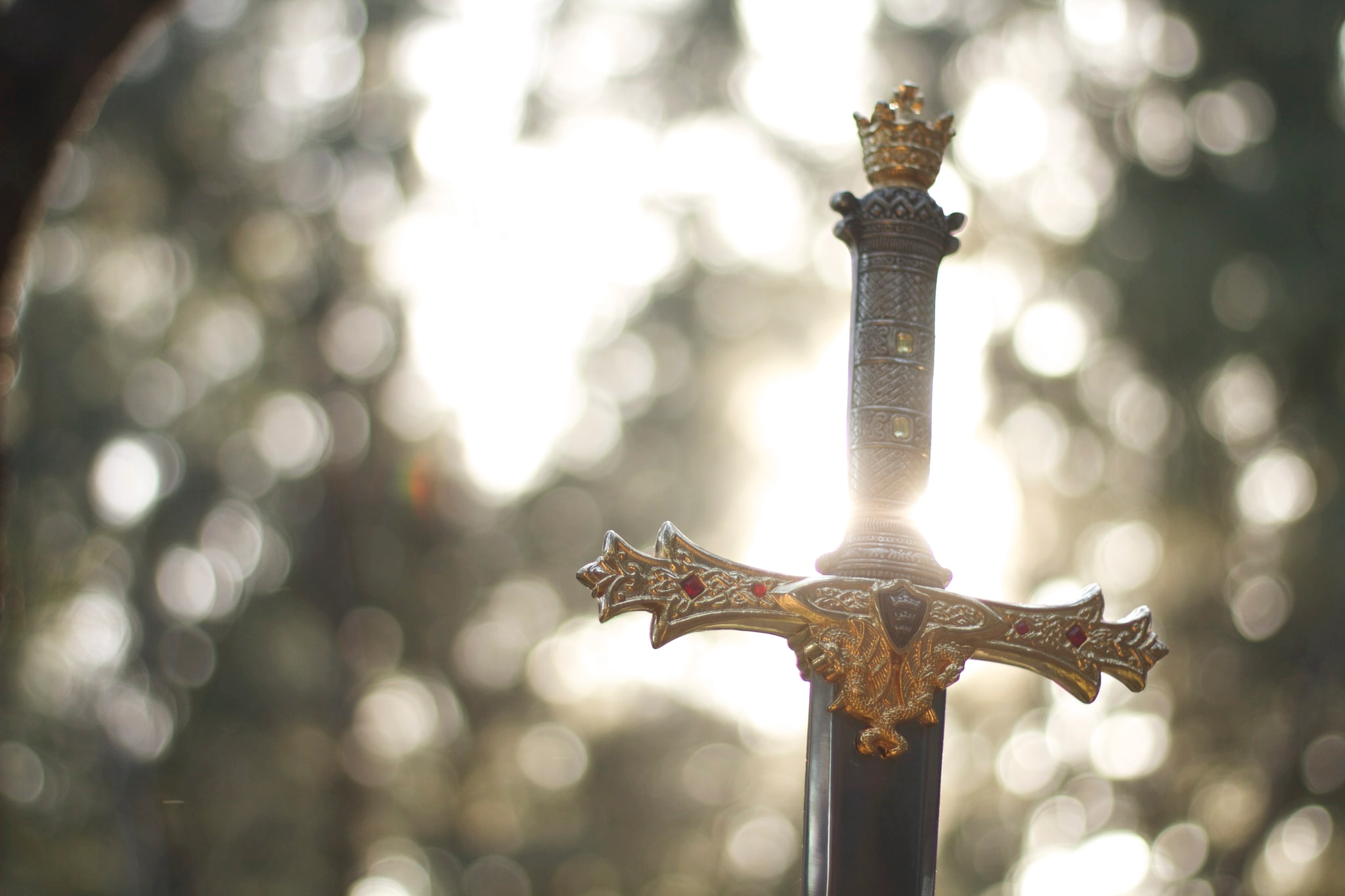Historical and Cultural Significance: Sword Meaning

Sword meaning – The sword is an ancient weapon that has been used for both combat and ceremonial purposes throughout history. Its origins can be traced back to the Stone Age, when humans first began to shape and sharpen pieces of stone into cutting tools.
In the realm of symbols, the sword stands as a potent emblem of power, a blade that severs and conquers. Its significance echoes through time, like the shimmering brilliance of a diamond , a stone of resilience and unyielding beauty.
Yet, amidst the clash of steel, the sword’s true meaning transcends its physical form, becoming a metaphor for the unyielding spirit that wields it, a testament to the indomitable will that cuts through adversity like a blade through the veil of darkness.
Over time, the sword evolved into a more sophisticated weapon, made of bronze and later iron. It became a symbol of power and authority, and was often used by warriors, knights, and kings.
The sword, a symbol of power and honor, has been wielded by warriors and kings throughout history. But in the depths of the umbrella pit , where forgotten objects find their final resting place, swords are but another artifact of a bygone era.
Here, beneath layers of rust and decay, the once-sharp blade is reduced to a mere shadow of its former glory, a testament to the relentless march of time and the ephemeral nature of all things.
Cultural Meanings of Swords
In many cultures, the sword is seen as a symbol of masculinity, strength, and courage. It is often associated with gods and heroes, and is often used in religious ceremonies and rituals.
In some cultures, the sword is also seen as a symbol of peace and justice. It is often used in ceremonies to swear oaths or to seal agreements.
Famous Swords
Throughout history, there have been many famous swords that have become legendary. Some of the most famous swords include:
- Excalibur: The sword of King Arthur, which is said to have been given to him by the Lady of the Lake.
- Durendal: The sword of Roland, a legendary knight who fought in the Battle of Roncevaux Pass.
- Masamune: A Japanese sword that is considered to be one of the greatest swords ever made.
Types and Designs

Swords have evolved over centuries, resulting in a diverse array of types and designs. The shape of the blade, its length, and its intended purpose all influence the sword’s classification.
Blade Shape
The shape of the blade is a defining characteristic of a sword. Some common blade shapes include:
– Straight blades: These blades are typically double-edged and designed for thrusting or slashing.
– Curved blades: These blades are often single-edged and designed for cutting or slicing.
– Single-edged blades: These blades have a sharp edge on one side and a dull edge on the other. They are designed for cutting or slashing.
– Double-edged blades: These blades have a sharp edge on both sides. They are designed for thrusting or slashing.
Length
The length of a sword is another important factor to consider. Swords are typically classified into three categories based on their length:
– Short swords: These swords are typically less than 24 inches long. They are designed for close combat and self-defense.
– Medium swords: These swords are typically between 24 and 36 inches long. They are designed for a variety of purposes, including combat and hunting.
– Long swords: These swords are typically more than 36 inches long. They are designed for combat and are often used by cavalry.
Purpose
The intended purpose of a sword also influences its design. Some common purposes for swords include:
– Combat: Swords designed for combat are typically strong and durable, with blades that are sharp and well-balanced.
– Hunting: Swords designed for hunting are typically lighter and more maneuverable, with blades that are designed for cutting and slicing.
– Ceremonial: Swords designed for ceremonial purposes are often ornate and decorative, with blades that are not intended for combat.
Materials and Techniques
Swords are typically made from steel, but other materials such as bronze, iron, and titanium have also been used. The steel used in swords is often hardened and tempered to improve its strength and durability.
The techniques used to make swords have evolved over time. In the past, swords were often forged by hand. Today, swords are typically made using a combination of forging and machining.
Evolution of Sword Design
The design of swords has evolved over time to meet the changing needs of warriors and civilians. In the early days of warfare, swords were primarily used for thrusting. As armor became more common, swords with curved blades were developed to better cut through armor. In the 19th century, the invention of firearms led to a decline in the use of swords in combat. However, swords continue to be used for ceremonial purposes and self-defense.
Swordsmanship and Combat

Swordsmanship is the art of wielding a sword, encompassing a wide range of techniques and styles developed over centuries. It involves mastering stances, footwork, and strikes, each element contributing to the swordsman’s effectiveness in combat.
Basic Techniques
The foundation of swordsmanship lies in three fundamental techniques:
– Stances: These provide a stable and balanced position from which to attack or defend. Common stances include the guard stance, where the sword is held in front of the body, and the lunge stance, which allows for quick forward strikes.
– Footwork: Agile footwork is crucial for mobility and maintaining balance. It enables swordsmen to evade attacks, close the distance, or create openings for strikes.
– Strikes: Sword strikes come in various forms, each with its own purpose and trajectory. Basic strikes include thrusts, cuts, and slashes, which can be executed from different angles and with varying degrees of force.
Styles of Sword Fighting
Over time, distinct styles of sword fighting have emerged, each tailored to specific combat situations:
– Fencing: A highly stylized form of swordsmanship, fencing emphasizes precision, agility, and the use of a light, flexible blade. It is often practiced as a sport, but its techniques also have practical applications in combat.
– Kendo: A Japanese martial art, kendo focuses on the use of the bamboo sword (shinai) to develop physical and mental discipline. It emphasizes rapid strikes, footwork, and a strong sense of etiquette.
– Saber Combat: Developed for use with the curved saber, saber combat involves fast, slashing attacks and a focus on mobility. It was widely used in cavalry combat and dueling.
Role in Battles and Duels, Sword meaning
Throughout history, swords have played a pivotal role in battles and duels. In medieval warfare, swords were the primary weapon for infantry and cavalry, shaping the outcome of countless conflicts. In duels, swords were the preferred choice for settling disputes and defending one’s honor. The skill and mastery of swordsmanship often determined the victor in these deadly encounters.
The sword is a symbol of power, strength, and courage. It has been used throughout history as a weapon of war, a tool for hunting, and a ceremonial object. But what does the sword mean in the quantum world? Quantum pits are tiny regions of semiconductor material that have been engineered to have a specific electronic structure.
These structures can be used to create lasers, transistors, and other electronic devices. The sword, with its sharp edge and pointed tip, is a reminder that even the smallest things can have a powerful impact.
In the realm of ancient warfare, the sword held both symbolic and practical significance. Its sharp edge could cleave through flesh and bone, rendering it a formidable weapon in the hands of a skilled warrior. Yet, beyond its martial prowess, the sword also represented honor, courage, and the indomitable spirit of the bearer.
As a symbol of power and authority, it was often carried by kings and nobles. In the tumultuous atmosphere of a casino pit , where fortunes could be won and lost in a single roll of the dice, the allure of the sword remained potent.
Its gleaming blade served as a reminder of the fickle nature of luck and the ever-present threat of danger that lurked beneath the surface of the seemingly glamorous facade.
In the realm of weapons, the sword stands as a symbol of power and honor. Its sharp edge, a testament to the strength of its wielder. However, beneath its gleaming surface lies a duality. Like the umbrella definition , which shields against the elements, the sword can also protect.
Its presence alone can deter enemies, its symbolism a reminder of the consequences that come with its use.